We were delighted to return to Switzerland in July 2023 to run our “Alpine Adventure” tour for a second time. GeoWorld Travel’s James Cresswell co-lead the tour with Dr David Buchs, a Senior Lecturer at Cardiff University. This time around, we were joined by ten guests, all from the USA. The group assembled in Geneva for the first night of the tour. Our circular route then took us in a clockwise direction from Geneva, taking in stops at Neuchâtel, Interlaken, the Jungfraujoch, the Lochsite Tectonic Area Sardona, the Rhône Glacier, the Aletsch Glacier, Zermatt and the Matterhorn – to name but a few! – before returning to Geneva. The map below shows the route we took on our 10-day tour.
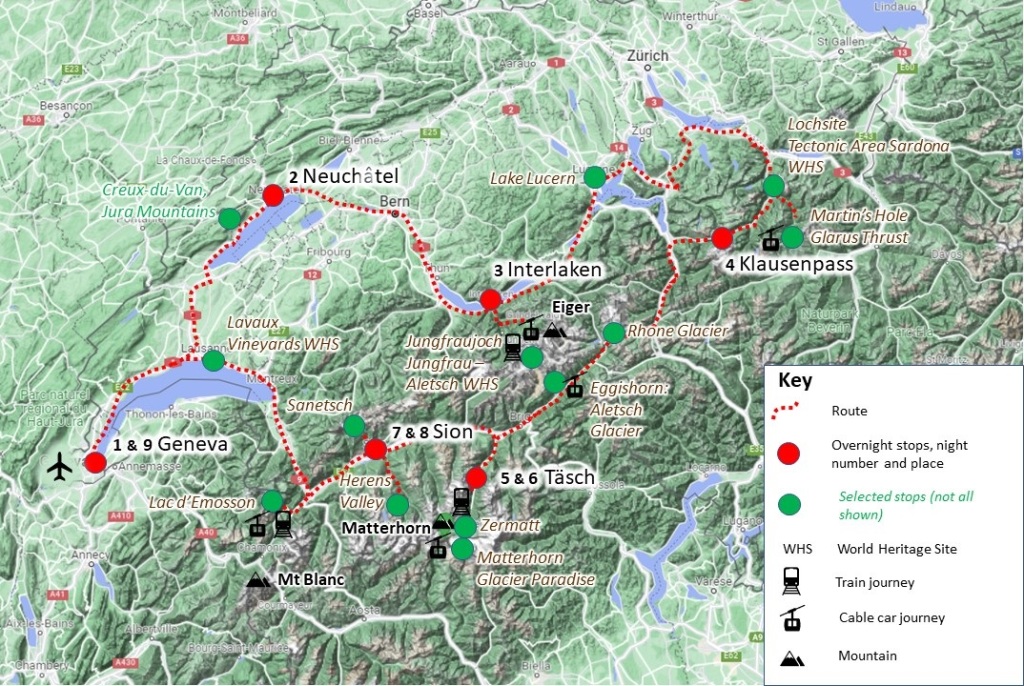
Geological themes of the trip included mountain building, glacial activity and vanished oceans. We were able to get exceptional views of some of the world’s most famous mountains and to hear explanations of their formation. Seeing the glaciers close-up whilst an exhilarating experience, was also rather sobering when the recent rate of retreat was so clear to see. The group also got the chance to visit no less than three World Heritage Sites – the Swiss Alps Jungfrau-Aletsch, the Lochsite Tectonic Area Sardona and the Lavaux Vineyards. Add to that a guided tour of the engineering marvel, the Emosson Dam, and you can see that our group had a fascinating and packed itinerary!
As you can imagine, there was no shortage of stunning scenery and photogenic geological stops on this tour, so there was a huge number of photographs to choose from! After a tough editing process, the following 50 photos made it through to give the best photographic summary of this fabulous trip – we hope you enjoy browsing through them!
Click on photos to enlarge
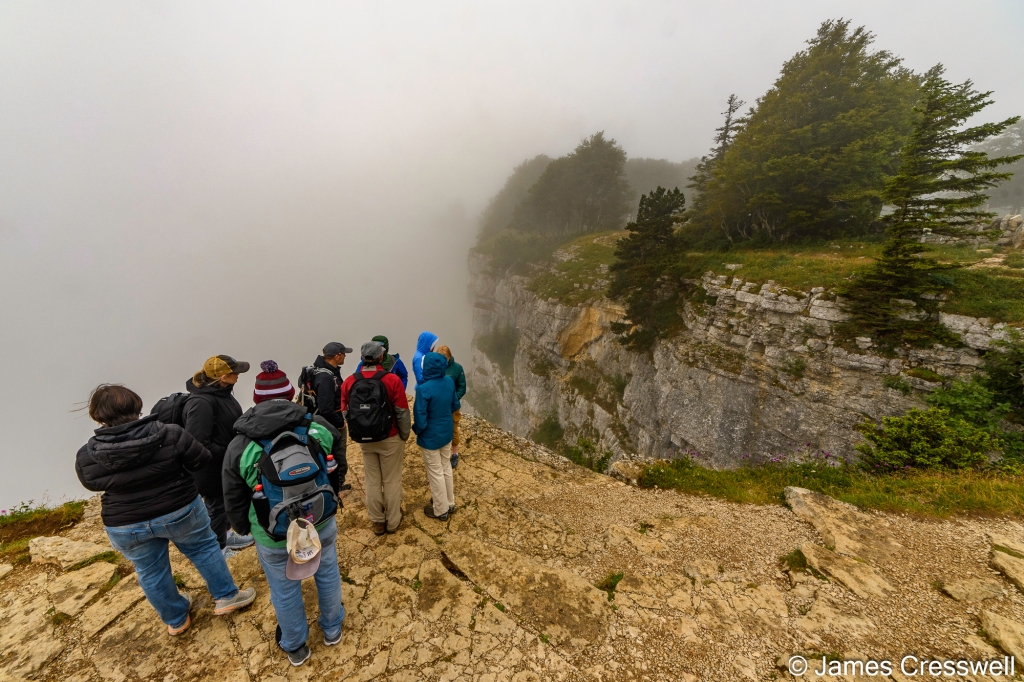


Above left: The group examine Jurassic aged limestones at Creux du Van in the Jura Mountains. The Jura Mountains are the type area of the Jurassic period.
Above centre: Pierre-à-Bot, a glacial erratic which originated in the Mont Blanc massif and was carried to its present position in the last Ice Age. Switzerland’s most famous geologist, Louis Agassiz, used it to defend his theory of glaciation and requested it to be classified as a “precious monument of natural history”.
Above right: The group examine paving cobbles in the centre of Neuchâtel. The cobbles contain many different rock types including ophiolitic rocks that do not outcrop in the Neuchâtel area. These rocks were carried to the area by glaciers and were later further transported by rivers.
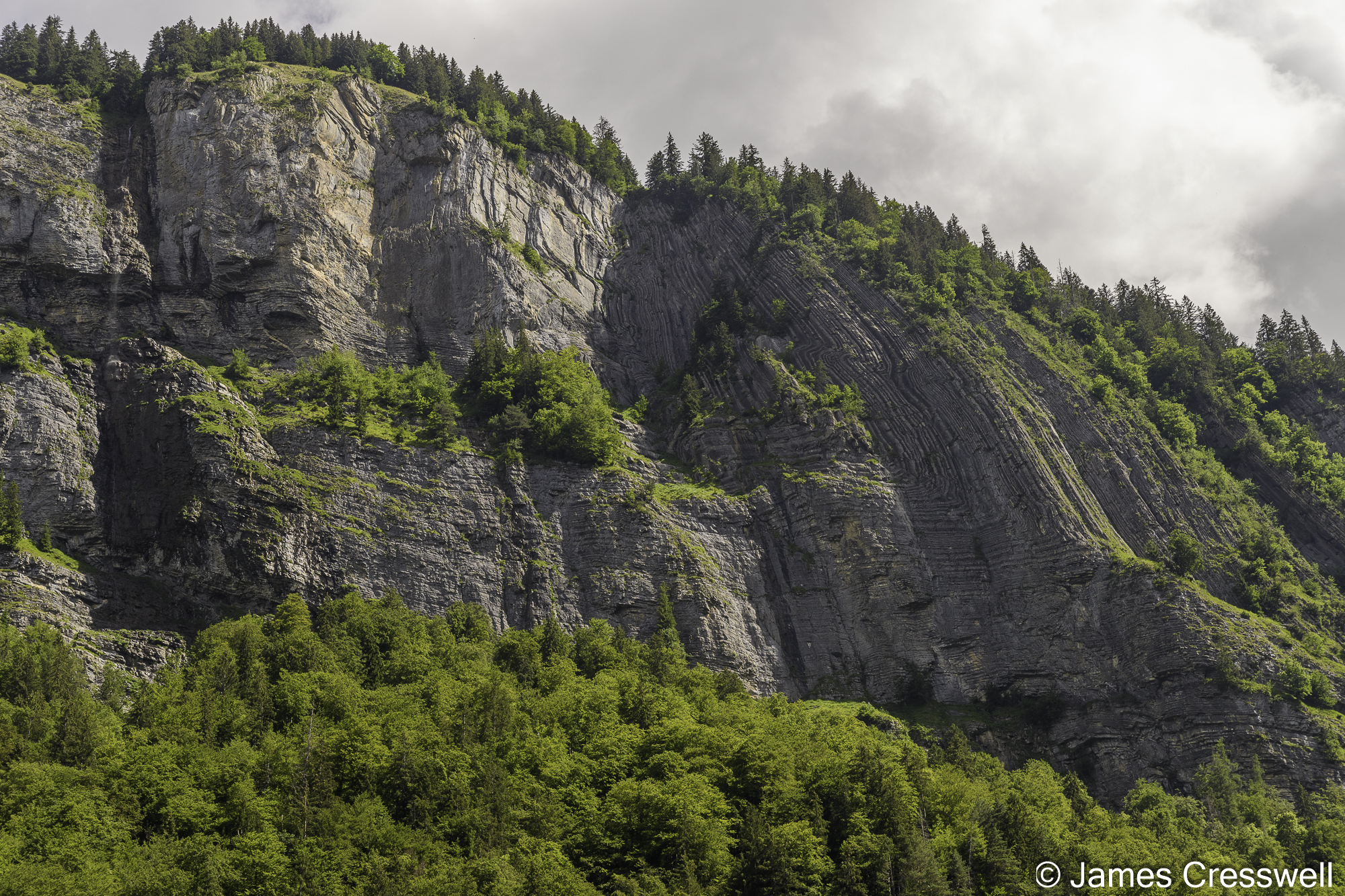


Above left: A fold in Jurassic sediments of the Helvetic Nappe at Lütschental, near Grindlewald.
Above top right: Some of our group riding the Eiger Express cable car en route to the Jungfraujoch via Eigergletscher.
Above bottom right: An Eiger Express cable car passes the North Face of the Eiger. This face is one of the world’s most iconic rock climbs and the rock is made up of Jurassic limestone of the Helvetic Nappe.



Above left: View of the Aletsch Glacier, the longest and largest in the Alps and the showpiece of the Jungfrau-Aletsch UNESCO World Heritage site, as seen from Jungfraujoch.
Above top right: A view of a thrust fault at the Jungfraujoch; crystalline basement is thrust over Helvetic nappe rocks. The photo also shows glacial ice.
Above bottom right: Sheared rock with boudins underneath the Mönchsjoch Hut, in a snowstorm.
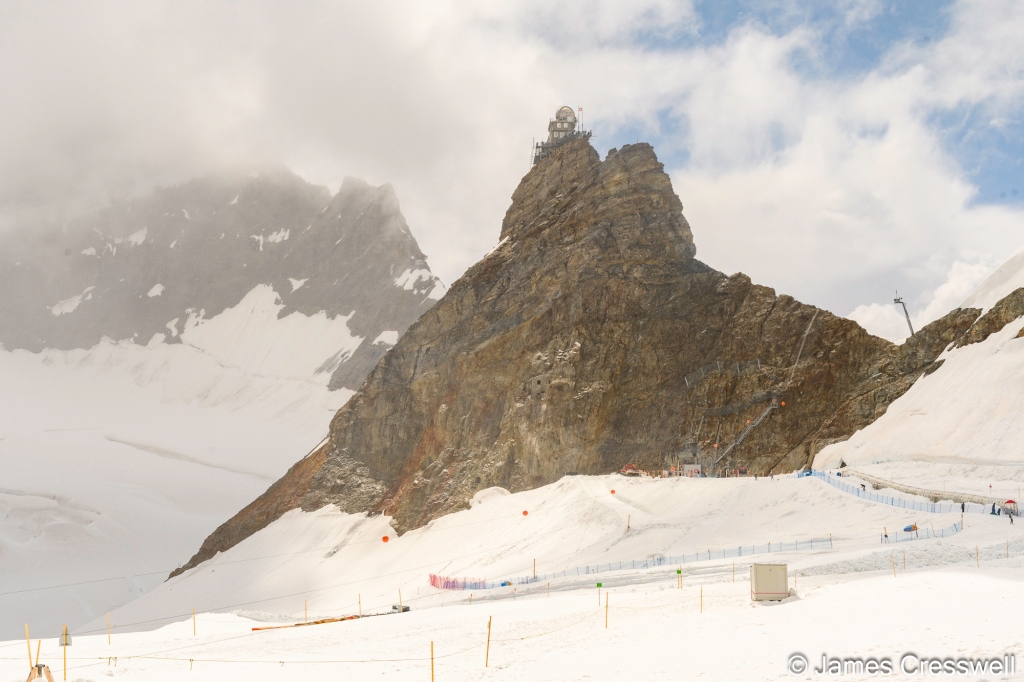

Above left: The Sphinx at Jungfraujoch. At the summit of the rock is an astronomical observatory and viewing platform. Inside the rock is the highest railway station in Europe, and at its base is the Aletsch Glacier and a snow park.
Above right: A man-made tunnel inside the Aletsch Glacier at Jungfraujoch.
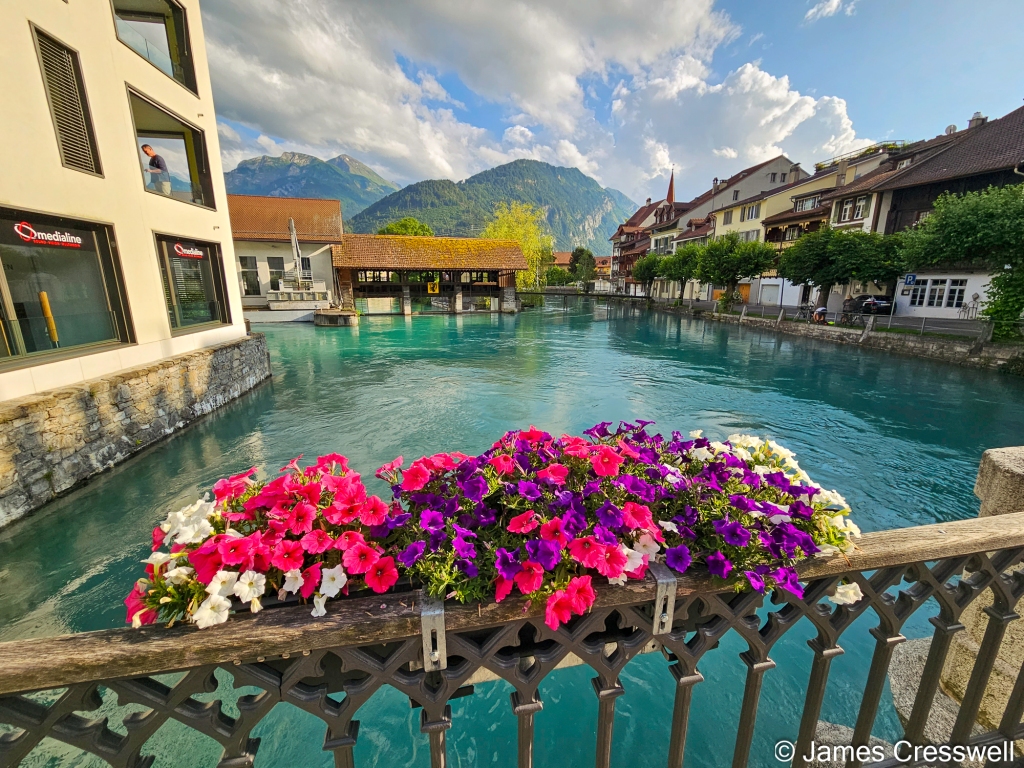

Above left: The river Aare in Interlaken which links the two lakes.
Above right: The North Face of the Eiger as seen from Interlaken.
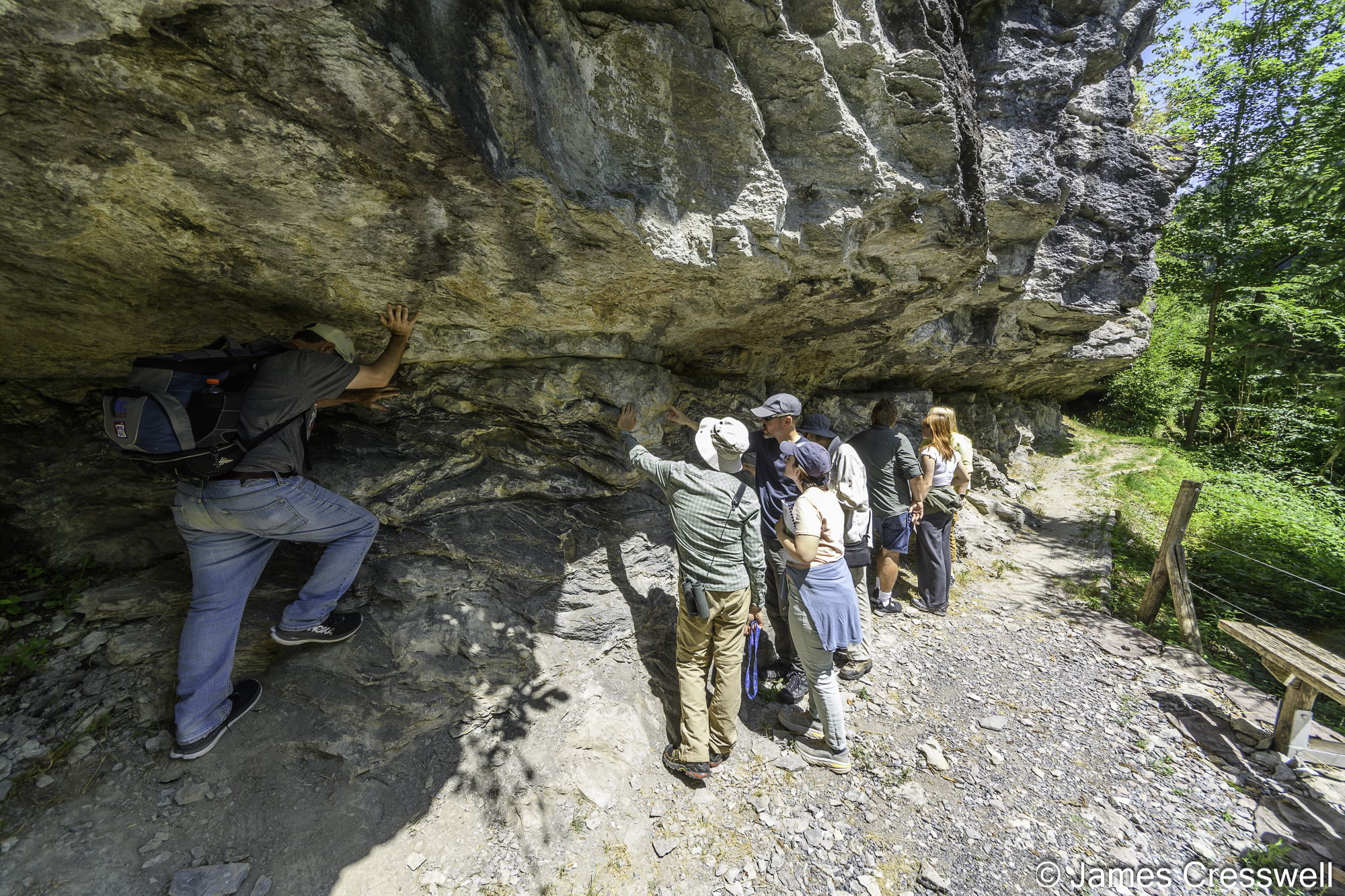


Above left: Our group examines the famous Glarus Thrust at Lochsite. Here 250-300 million-year-old Verrucano rocks rest on younger, 35-50 million-year-old Flysch rocks. The fault was identified at approximately the same time as the Moine Thrust was identified in Scotland, making them both the first thrust faults in the world to be identified.
Above top right: A view of the Glarus Thrust and Martin’s Hole from the top of the Elm cable car, in the Sardona Tectonic Area World Heritage Site.
Above bottom right: A view of the Glarus Thrust and Martin’s Hole from the Firstboden in the Sardona Tectonic Area World Heritage Site.
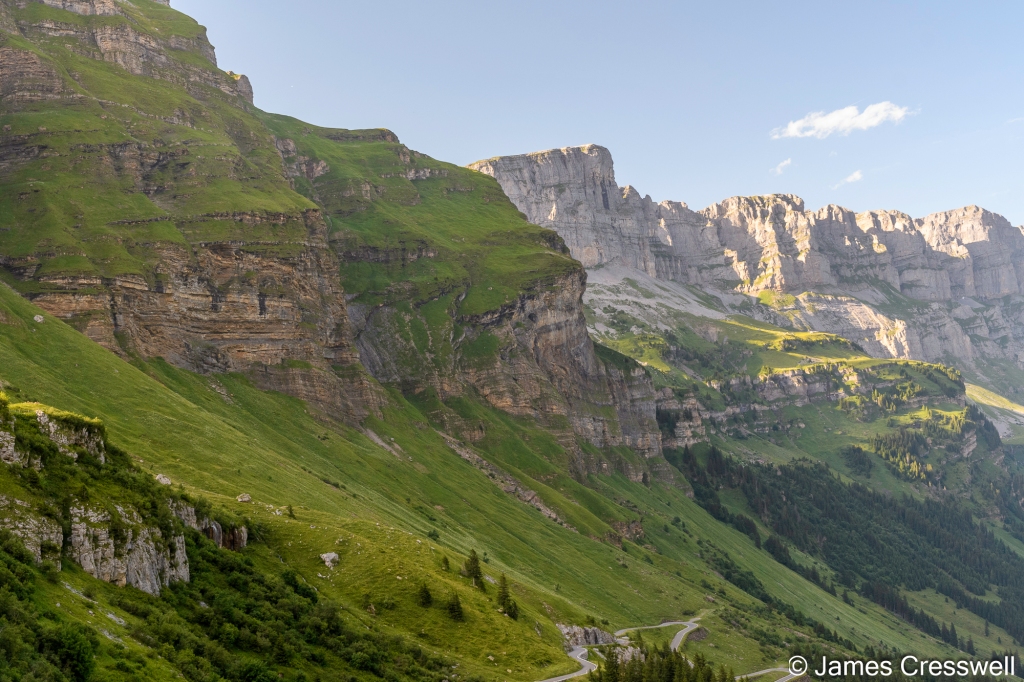


Above left: Recumbent folds in the Helvetic Nappe at Klausenpass.
Above centre: Hotel Klausenpass where we spent one of our nights.
Above right: David discusses the geology at the entrance to the Gotthard Railway Tunnel, which passes beneath the Gotthard Pass – elevation 2,106m. The tunnel was built in 2016 and at 35.5 miles (57.1 km) is the world’s longest and deepest traffic tunnel.
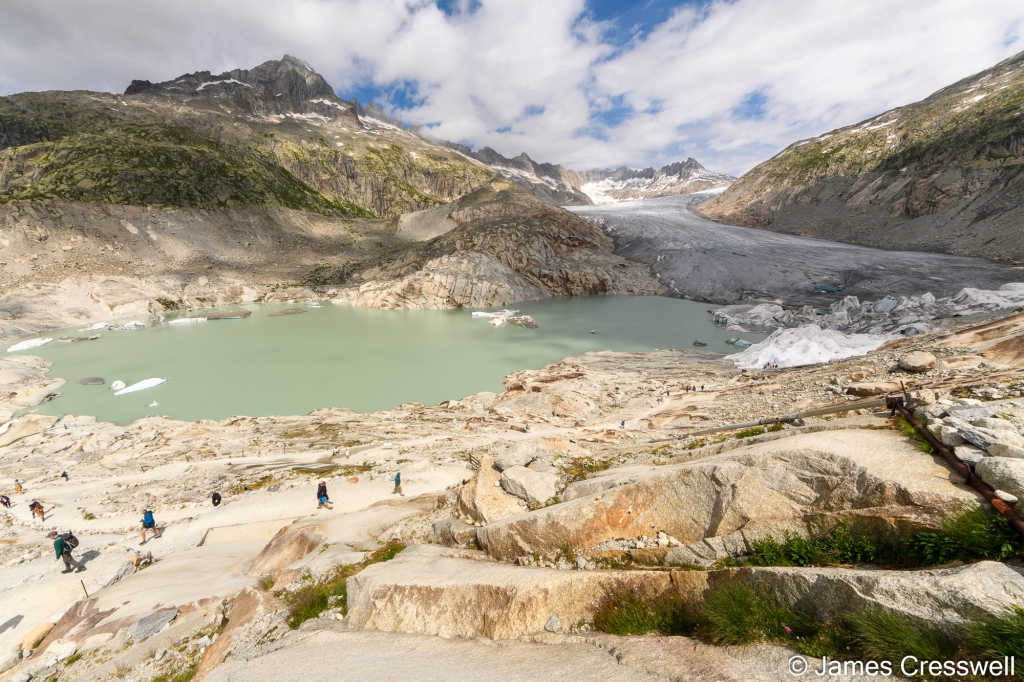

Above left: The Rhône Glacier, the source of the River Rhône. The glacier is currently undergoing rapid glacial retreat, and this has left a large glacial lagoon in front of it. The snout of the glacier is covered in sheets, in an attempt to slow the melting.
Above right: The Hill family inside the Rhône Glacier ice cave.
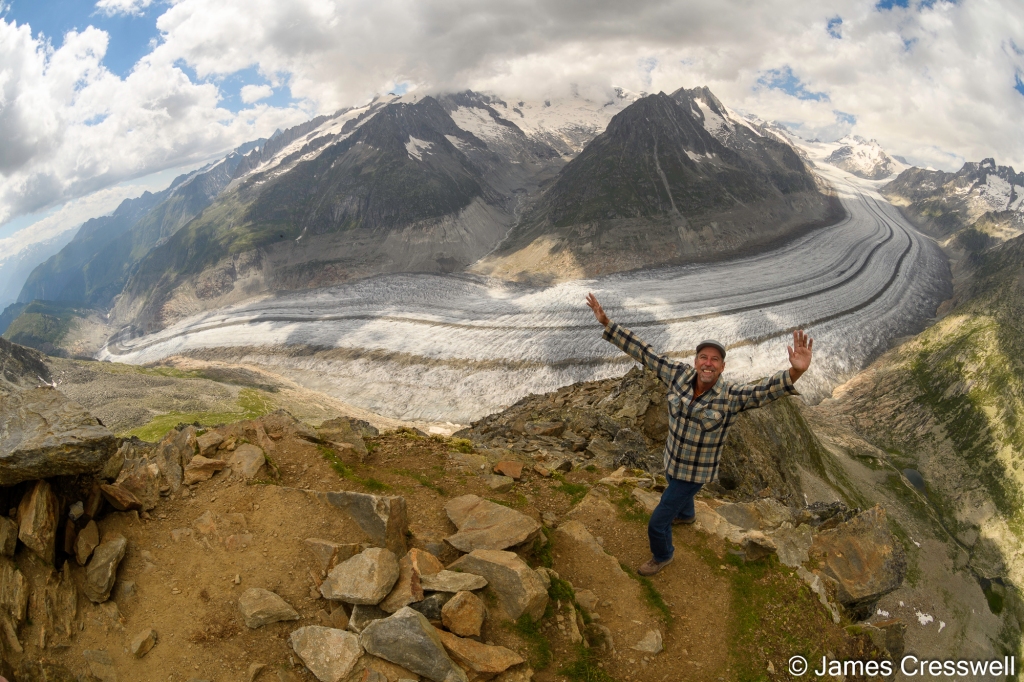

Above left: Dave with the whole length of the Aletsch Glacier behind him, photographed from Eggishorn.
Above right: Dave and David on the summit of Eggishorn with the Aletsch Glacier on their left.



Above left: The Matterhorn viewed from Klein Matterhorn. The rock of the upper part of the Matterhorn was African crust which slid over Oceanic crust; the latter makes up the base of the mountain.
Above top right: An extraordinary outcrop of eclogite which has been positioned outside the Zermatt museum. The round circles were originally pillow basalts (formed on the spreading ridge of an ocean) which were then taken down to enormous depths in the subduction zone, only later to be thrust back up to the surface during the formation of the Alps.
Above bottom right: The Matterhorn-Express ascends from Zermatt to the Kleine Matterhorn, passing the Matterhorn as it does so. The Matterhorn is arguably Switzerland’s most iconic mountain.
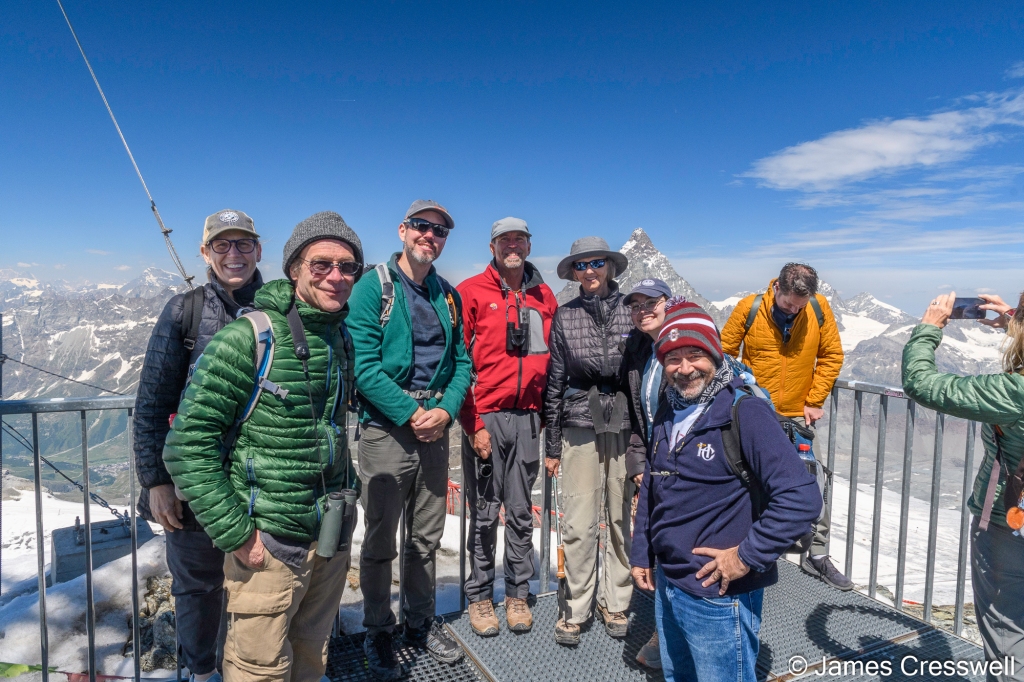

Above left: The GeoWorld Travel group on the viewing platform at Klein Matterhorn, at 3,883m above sea level. The site is the highest cable car station in Europe and affords excellent views over the whole of the western Alps.
Above right: Views of the summit of the Breithorn (4,160m) as seen from the summit of Klein Matterhorn (3,791m).
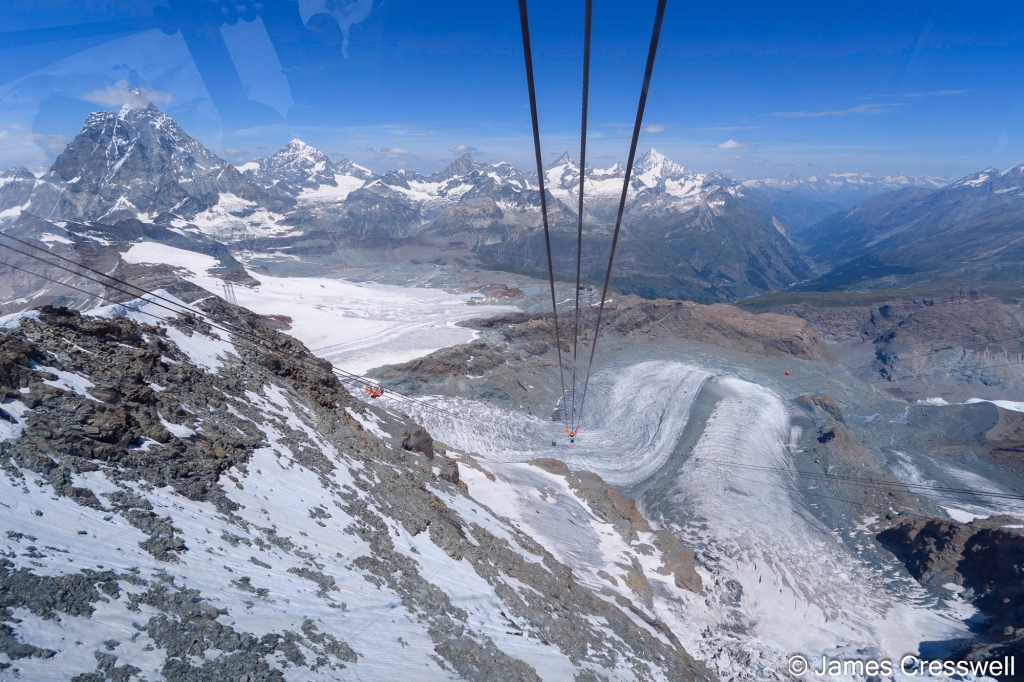

Above left: The view from the cable car up to Klein Matterhorn as it passes over two glaciers which are meeting, creating a medial moraine, visible as the grey stripe in the photo.
Above right: The Matterhorn-Express cable car crosses over the Unterer Theodulgletscher as it descends form Klein Matterhorn.
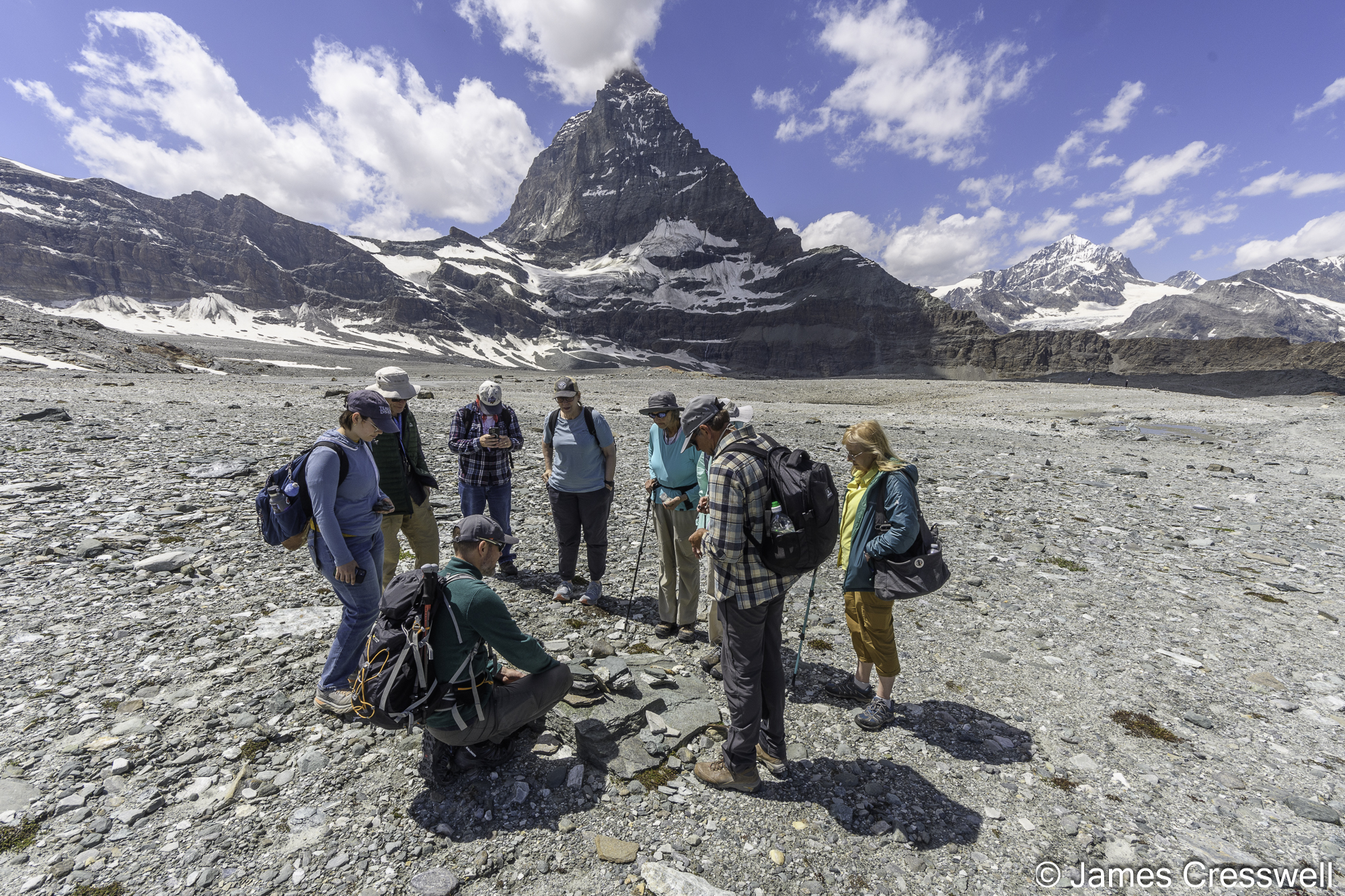


Above left: David explains the rocks found along the Matterhorn Glacial Trail, which include rocks that originated from the African crust, the Valais Ocean and the European crust.
Above top right: Serpentinised rocks, that were originally part of the mantle beneath the Tethys (Piedmont) Ocean, lie on the ground on the Matterhorn Glacial Trail. The Matterhorn in the background is made of rock that was once African crust that thrust over these oceanic rocks in the foreground.
Above bottom right: Metamorphic rock containing very large garnet crystals.


Above left: Folded schist that has additional micro folds, seen on the Matterhorn glacial trail. Prior to metamorphism this rock would have been oceanic sediments on the floor of the Tethys (Piedmont) Ocean.
Above right: The group walks on an outcrop of eclogite. This high-pressure metamorphic rock was originally basalt on the ocean floor, that was dragged down a subduction zone, only to be later thrust back to the surface. It contains the minerals garnet and omphacite.
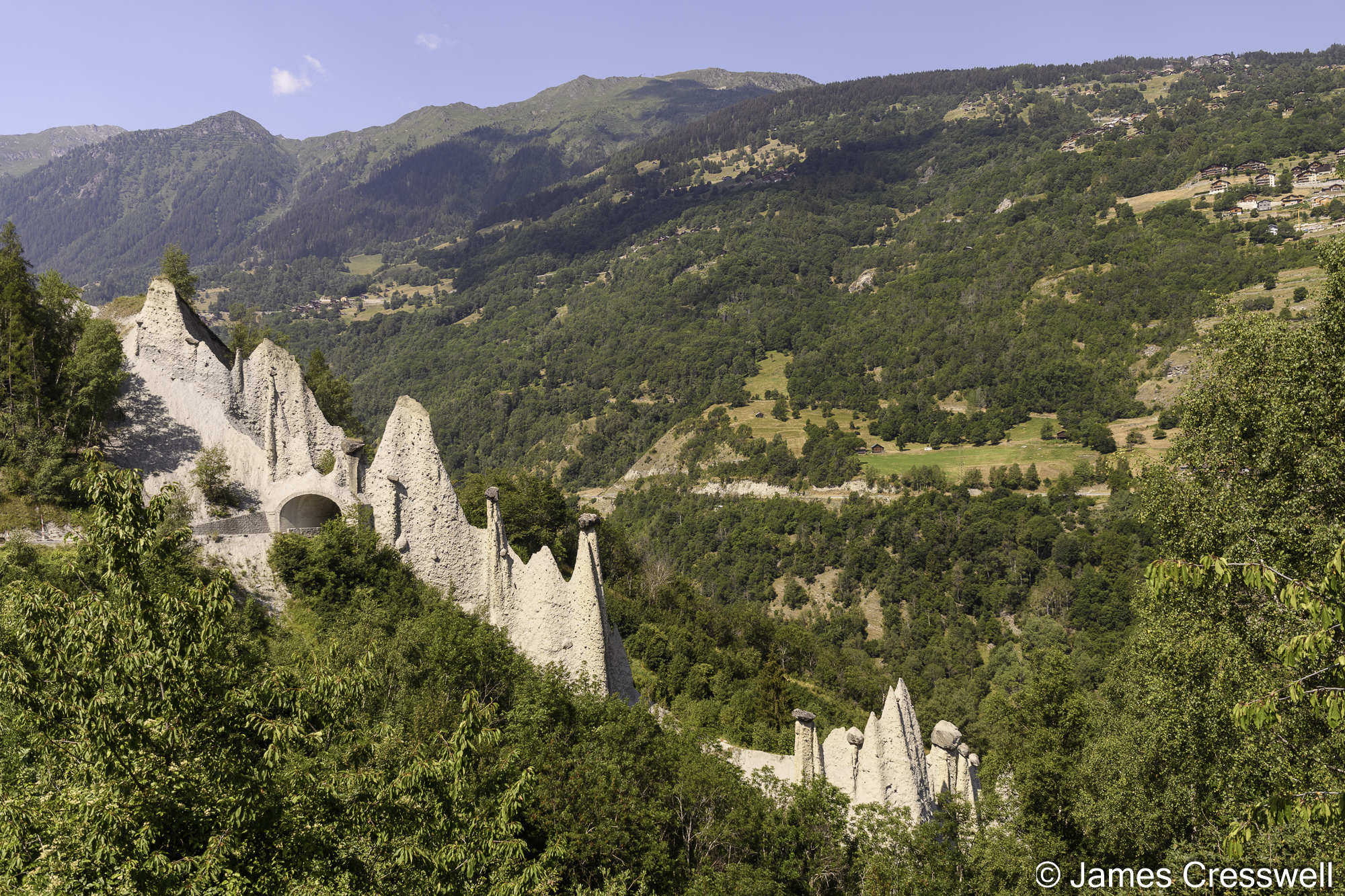


Above left: The Pyramids of Euseigne, which are magnificent hoodoos – boulders perched on top of cones made of glacial moraine in the Herens Valley.
Above top right: Boulders made from gneisses of the African continent at Ferpècle in the Herens Valley.
Above bottom right: Meltwater cascading out of the Ferpècle glacier. The bedrock that it is flowing over is of African crustal origin and it is part of the Dents Blanche nappe.
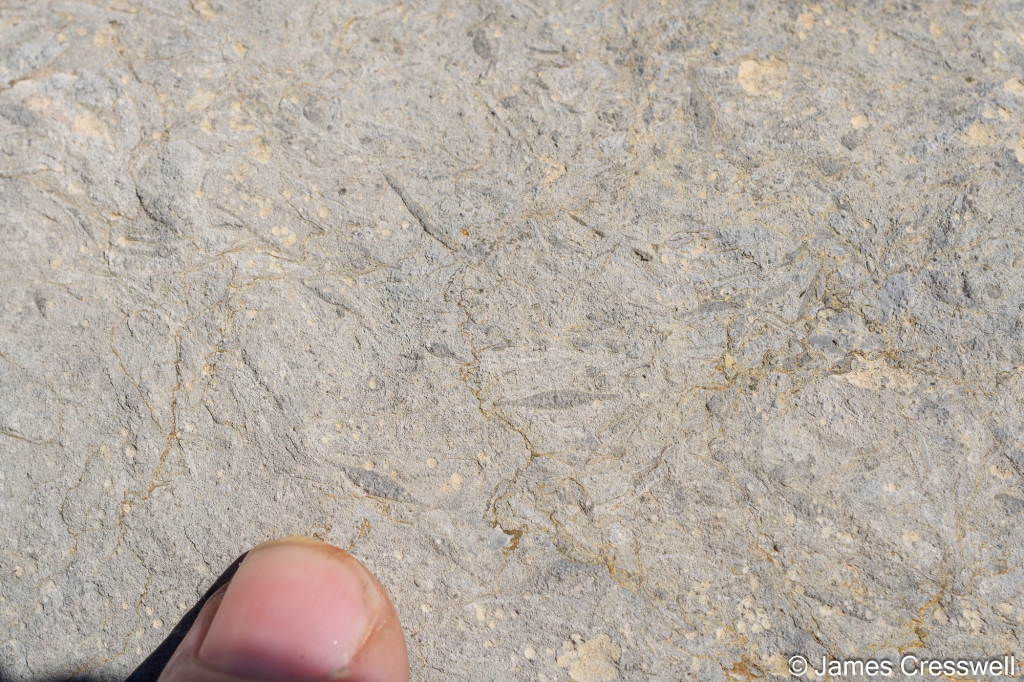

Above left: Fossil foraminifera, called nummulites, in Eocene limestone of the Helvetic Nappe at Sanetsch.
Above right: A limestone pavement made of Cretaceous and Eocene aged rocks of the Helvetic Nappe at Sanetsch.



Above left: Entrance to the St Léonard underground lake
Above top right: Riding the scenic train to the Emosson Dam.
Above bottom right: A dinosaur model wearing a cycle helmet with Mont Blanc in the background, at the Emosson Dam. Archosaur tracks (once thought to be dinosaur) have been found nearby. The Tour de France has also visited the site!



Above left: Folded Mesozoic limestones above the Emosson Dam.
Above top & bottom right: The GeoWorld Travel group enjoys an explanation of the Emosson Dam and a guided tour inside the dam.
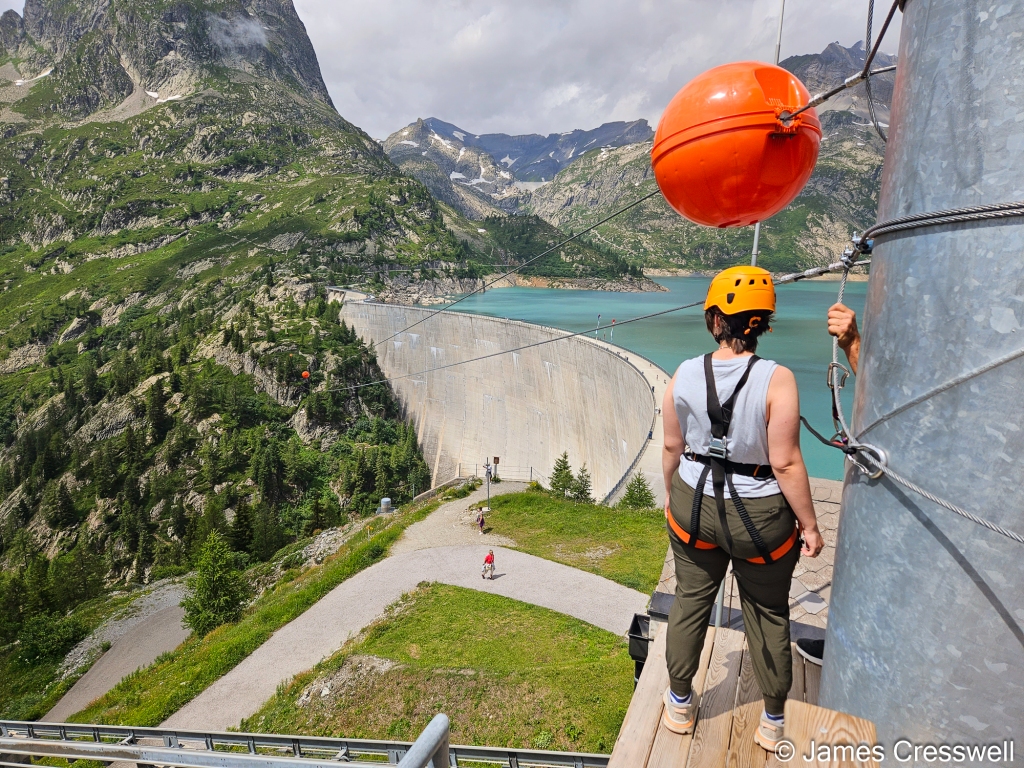

Above left: Carly about to brave an (optional!) zip line ride at the Emosson Dam.
Above right: View of Mont Blanc, seen from the Emosson Dam
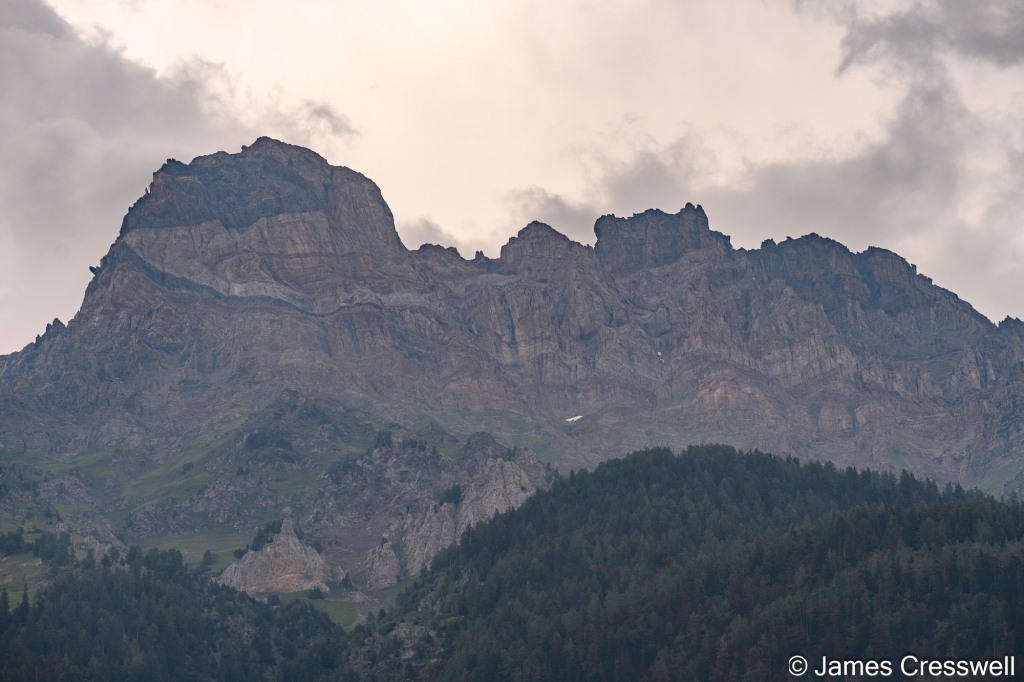

Above left: The spectacular Morcles nappe
Above right: The GeoWorld Travel group at the final stop of the tour: The Lavaux Vineyard Terraces UNESCO World Heritage Site on the shore of Lake Geneva.
Thank you to a great group – it was a lot of fun to travel with you all! We had some fascinating discussions about the geology and a diverse range of other things!
We will be returning to Switzerland again in the future – for further details of the dates and prices, please visit our website: https://www.geoworldtravel.com/Switzerland.php

